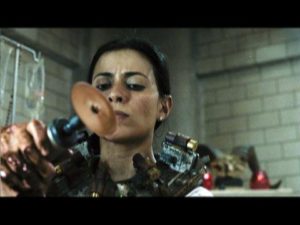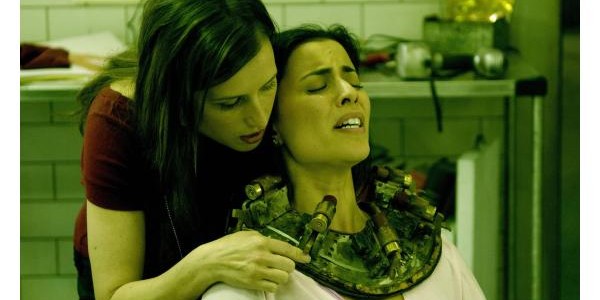https://youtu.be/eZwnZqKfvzw
[Content Warning: this piece contains brief discussions of self-harm]
What makes a woman angry? The answer can consist of many explanations, most of them ways they were wronged by some type of external force. Women are predisposed to be angry, and for good reason. We are continuously ignored, told that our feelings are exaggerated, led to believe that our experiences are not nearly as bad as we think they are. When you break a woman down so frequently, should it really be a surprise when she takes solace in anything remotely taboo?
Believe it or not, one of the horror franchises that has best understood this idea is SAW. While it hasn’t always treated its female characters with nuance (see Jill’s egregious train dream in SAW: THE FINAL CHAPTER), the series has created a complex and celebrated female villain that still resonates to this day in Amanda Young (Shawnee Smith).
Despite her presence lessening significantly as the series progressed, the first three installments arguably told her complete story. Amanda was first introduced as one of the few to have survived Jigsaw’s heinous games. Seen as unworthy of living due to her addiction, she was forced to escape the now-infamous Reverse Bear Trap by killing a sedated man whose stomach had the key to the contraption. Through this, she became one of the few people to survive Jigsaw’s wrath with her life. However, it was clear through her tearful end to her police testimony that she would forever be altered.

Audiences probably didn’t expect just how much her life would change, though. When she returned in SAW II, she was framed as the budding franchise’s new Final Girl, someone who knew exactly how Jigsaw’s traps can be beaten so that others don’t have to endure what she did. This, of course, ends up not being the case. The iconic ending of SAW II shows Amanda as Jigsaw’s apprentice, not someone working against him. When she reveals her true intentions to Detective Eric Matthews (Donnie Wahlberg), she establishes herself as a force to be reckoned with throughout the series.
It wasn’t until SAW III, however, that Amanda cemented herself as an iconic character in modern horror history. Throughout the film, she consistently teeters the line between sanity and insanity through her twisted versions of Jigsaw’s traps and considerably less forgiving philosophy. Although she is his apprentice, she doesn’t necessarily agree that everyone he targets deserves another chance. Instead, she leads participants to think they have a chance at escape, only for there to be no real way to survive.
Despite everything, she always maintains a sense of control. Amanda knows exactly how far she’s sunken into the Jigsaw philosophy. She knows that her method of learning is cruel, unusual, and unfair. The thing is, she just doesn’t care. Whenever she feels like that control is wavering, she cuts or burns herself in an effort to refocus on her tasks. She doesn’t care how many people she has to kill or how extensive her self-harm becomes. As long as she gets to prove her message and her worth to the dying John, Amanda considers it all to be worth it.

This sense of care defines the three SAW films in which Amanda is a major player. In SAW, she is seen as deeply scarred and confused about why she, specifically, survived the Reverse Bear Trap. Above all, however, she cares that she survived, no matter the cost. In SAW II, she creates a believable façade to the other trapped participants that she cares about them. However, she is still able to show compassion towards others. SAW III is when she finally goes off the deep end, not caring about anyone else outside of herself and John. She is too far gone to be made to see the error of her ways, which Dr. Lynn Denlon (Bahar Soomekh) attempts to do throughout the film. She’s not miserable or depressed. She just doesn’t care.
Female villains are certainly not lacking within the horror genre. Many such characters, however, like Pamela Voorhees or Sadako Yamamura, base their entire motivation on tragedy or personal wrongdoings. Too many times, female characters in horror have to justify themselves and their emotions. What makes Amanda unique is that she has absolutely nothing to justify and her experience at the hands of Jigsaw is only a small part of why she ended up becoming the woman she was. All of the rage and horror she experienced as the criminal justice system continuously failed her was bound to manifest itself in some way. It just took that one relatively small but nonetheless fateful encounter involving a Reverse Bear Trap to set her towards the path that solidified her iconic villain status.
Tags: Angus Macfadyen, Anniversaries, Bahar Soomekh, Darren Lynn Bousman, Dina Meyer, Donnie Wahlberg, Jigsaw, Leigh Wannell, Saw, Saw 3, Saw III, Shawnee Smith, Tobin Bell



No Comments